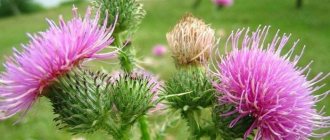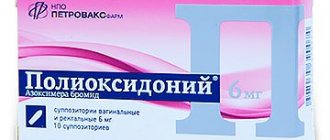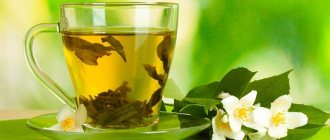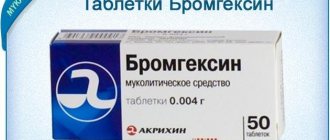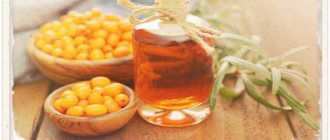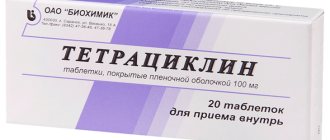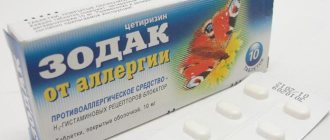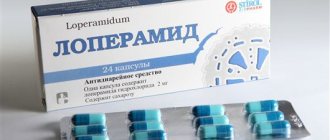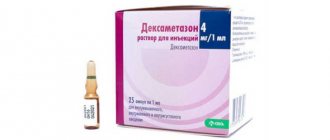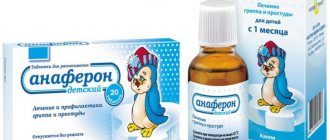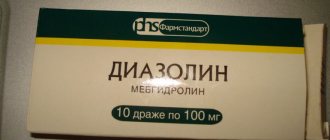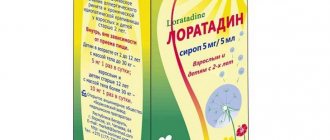Category: Immunomodulators
Echinacea tincture is an immunostimulating herbal remedy. Echinacea is a medicinal plant that has a pronounced immunostimulating effect. Widely used in official and folk medicine.
The tincture is a transparent liquid from greenish-yellow to yellowish-brown in color with a weak specific odor and bitter taste. During storage of the drug, sediment may appear.
Taking the drug activates the production of interferon, increasing the body's resistance to viruses and bacteria. The use of Echinacea tincture helps to quickly cope with the disease, stop inflammatory processes, and speed up the restoration of damaged tissues.
The substances that make up the medicinal plant have a destructive effect on viruses, stimulate the activity of macrophages and granulocytes, and direct them to pathological foci. Cytokines affect cells responsible for nonspecific immunity. Inulin and betaine improve metabolic processes.
The tincture is sold in 50 ml bottles. Bottles of 1 piece are packaged in cardboard boxes.
What is Echinacea
This plant is distinguished by rough straight stems, basal leaves and large baskets that reach a diameter of 15 cm. Purple coneflower grows up to one meter in height, has a specific smell and purple-red color. It is often confused with rudbeckia, but these are two different herbs. Among medicinal plants, Echinacea purpurea occupies a well-deserved place of honor, since its medicinal properties make it possible to heal not from the consequences of diseases, but from the root causes.
Echinacea - composition
The medicinal plant is rich in a variety of mineral and biologically active substances. Echinacea contains a lot of iron, selenium, potassium, calcium, silver, cobalt, manganese, magnesium, zinc and other components beneficial to the human body. Its rhizomes are saturated with fatty and essential oils, tannins, resins, organic acids, inulin, glucose, alkaloids, and polysaccharides.
The special value of echinacea is the presence of betaine, which prevents the development of stroke and heart attack. Such a rich medicinal composition provides an excellent opportunity for preparations with echinacea to participate in hematopoiesis, the formation of the strength of bones, nail plates, and teeth. Medicines based on Echinacea purpurea should be used strictly according to the instructions (description) so that there is no overdose.
Echinacea - benefits and harm
The diverse chemical composition of the plant exhibits antiseptic and antiviral properties. The benefits of echinacea are evident in the treatment of influenza and other viral infections, since phenol carbonic acids have a stimulating effect on the immune system. Echinacea purpurea has anti-inflammatory and antifungal properties, accelerates the healing of wounds, eczema, and ulcers. The benefits and harms of echinacea are close together, because the plant’s ability to simulate immunity sometimes turns against a person if he has an autoimmune disease.
- Herbs to boost immunity
- Natural antibiotics instead of drugs - a list of the most effective herbs, plants, berries and spices
- Tablets to boost immunity for adults - list
Echinacea herb - medicinal and beneficial properties
Echinacea is a perennial plant of the Asteraceae family. Despite the fact that the plant's homeland is located in the east of the North American continent, tall stems of grass topped with purple-pink inflorescences can be found in most of our garden plots.
For many gardening enthusiasts, Echinacea (or rudbeckia) is, first of all, an ornamental plant. However, even people far from gardening know about the medicinal properties of the flower. Which is not surprising - many popular medicines have been created based on the herb extract.
The plant owes its healing capabilities to its rich chemical composition.
Thanks to the presence of essential oils, vitamins A, C and E, organic acids, natural antimycotics, glycosides, tannins, antioxidants and trace elements such as iron, selenium, silicon and calcium, the overall benefits of echinacea are equal to the effects of several medications, including multivitamin complexes and antibiotics.
The use of the plant provides therapeutic results in several directions at once.
Active ingredients of Echinacea purpurea:
- participate in hematopoiesis;
- stimulate the formation of bones, nail plates, hair and teeth;
- prevent cell aging;
- prevent the development of tumors;
- activate the synthesis of interferons and increase immunity;
- bind free radicals and toxins and promote their removal;
- support the processes of restoration of damaged tissues;
- enhance the protective potential of the liver.
It is characteristic that, unlike other medicinal herbs, all above-ground parts of Echinacea purpurea - both inflorescences and stems with leaves - are of pharmacological interest.
Echinacea - uses
The unique properties that Echinacea contains are used not only for the prevention of various diseases, but also in complex treatment. The stems, roots, leaves, and flowers of a young plant less than two years old are suitable for medicinal purposes. Internal use of echinacea is important for ear infections, colds, diabetes, women's diseases, liver and bladder diseases. The plant attacks streptococcus, staphylococcus, and E. coli. Echinacea also gives excellent results when used externally. The medicinal plant relieves skin problems such as:
- insect bites;
- burns;
- furunculosis;
- abscesses;
- eczema;
- hives.
Traditional medicine recipes
It should be understood that Echinacea and its products cannot be considered as monopreparations, but only as an addition to the main treatment.
Universal alcohol tincture of Echinacea
Can be used for all of the pathologies listed above, with the exception of alcoholism, since it contains alcohol.
Pour raw crushed root or fresh flowers with 70% alcohol 1:4 and leave in a dark place for 1 month or more. Take half or a whole teaspoon 3 times a day for 10 days in a row.
The same tincture can be used externally (diluted halfway with chilled boiled water) to treat wounds, carbuncles, abscesses and healing burns (treatment, wet compresses). It also helps against herpes (cauterizing herpetic eruptions 3-5 times a day).
The second recipe for vodka tincture
Helps with the onset of acute respiratory viral infections, and is used to prevent viral infections.
Take echinacea flowers, place them in a half-liter jar so that the volume is filled to the top, fill with high-quality vodka and close the lid tightly. Leave in a dark place for 40 days. Next, drain and strain the preparation. Take 15 drops half an hour before meals, diluted in a small amount of water or adding the tincture to tea, 3 times a day.
Tincture made from the raw root of the plant
Recommended for the treatment of chronic gastritis, pancreatitis, psoriasis and allergic rashes on the skin and mucous membranes.
Take 1 part of raw roots and pour 5 parts of vodka over them, leave in a dark place for 30 days. Take 15-20 drops, diluted in water, 3 times a day.
Tea
Helps with flu, colds, inflammatory processes, after serious illnesses, surgeries, after treatment with antibiotics, and with alcoholism. It can also be used for eczema, ulcers and boils.
Take 3 pcs. fresh echinacea flowers or dry raw materials from crushed roots and leaves (2 tsp), pour half a liter of boiling water and leave for 40 minutes. To prevent diseases, it is enough to take 1 glass per day, and for treatment – 3 glasses per day. This tea rejuvenates the body and slows down the aging process.
Echinacea decoction
Recommended for flu and colds, coughs, swelling, stomach ulcers, headaches, joint pain. It also improves vision, stimulates appetite, normalizes blood pressure, and is characterized by a tonic and restorative effect. For streptococcal skin infections, psoriasis and snake bites, local lotions are made from the decoction on damaged areas of the skin.
Take 1 tsp. fresh or dry echinacea leaves, pour 200 ml of water, heat in a water bath for half an hour, then leave and strain. Take a third of a glass 3 times a day, before meals.
Infusion
Recommended for preventive use in winter, during the cold season. Strengthens the immune system, stimulates physical activity, relieves fatigue.
Take 30 gr. fresh or dried flowers, place in an enamel saucepan, pour 500 ml of boiling water, cover with a lid and boil for 10 minutes. Leave in a warm place for 4-5 hours, strain and add syrup, sugar, honey or juice to taste. Drink half a glass 3 times a day.
Juice of fresh inflorescences
Helps speed up the healing process of wounds, treats acne, ulcers, warts, and with long-term use eliminates age spots and freckles. Effective in the treatment of ARVI.
To obtain it, the inflorescences are crushed and the juice is squeezed out of the pulp. Use undiluted, 3-5 ml per day. before meals. Externally - treat the affected skin 3-4 times a day.
Oil extract from the roots of the plant
Helps in the treatment of peptic ulcers and gastritis. Lotions with the drug are used in the treatment of burns and bedsores. Tampons moistened with beneficial oil help in the treatment of cervical erosion (administered at night).
Take 1 glass of unrefined olive oil and 50 g. chopped roots, leave for 1 month. Take 1 tsp orally. 60 minutes before meals, twice a day.
Remedy for headaches, high blood pressure and nervous tension
Take the dry parts of the plant and grind them to a powder. Mix 100 g of powder with 300 g. honey and mix thoroughly. Take 3 times a day, with tea, 1 tbsp.
Echinacea for immunity
An alcohol tincture containing echinacea roots has a powerful immunostimulating effect on the human body. Its use is especially relevant as a prophylactic agent during acute respiratory diseases. Systematic use of echinacea tincture for immunity inhibits the proliferation of microbes, awakens the phagocytic response, and increases the level of leukocytes in the blood.
Echinacea infused with alcohol is also effectively used to treat diseases of the skin, genitourinary system, tissue restoration and wound healing. You can buy the tincture at any pharmacy or make it yourself according to the recipe:
- clean, wash and chop the dug up echinacea root;
- pour 70 or 95% alcohol so that it completely covers the roots;
- leave the mixture in a warm place for two weeks;
- then squeeze, filter;
- take tincture of echinacea root to increase immunity, 15-30 drops three times a day.
Find out more about the benefits of echinacea for the immune system.
Analogs
| Immunorm (tablets No. 20 - 160 rubles); | Immunal (tablets No. 20 – 280 rubles, drops 50 ml – 280 rubles); | Echinacea-Parapharm (tablets No. 40 – 112 RUR) |
| Estifan (tablets N 30 - 70 rub.) | Echinacea Hexal (drops 50 ml – 150 rub.) | Echinacin liquidum (solution 50 ml – 190 rub.) |
Author:
Sabuk Tatyana Leonidovna hygienist, epidemiologist
Echinacea for children
When a child’s immune resistance decreases, this is accompanied by prolonged and frequent colds. You can restore a weakened immune system with the help of various drugs created on the basis of an immunostimulating plant with medicinal properties. Now Echinacea for children from 2 years of age is produced in the form of herbal preparations, tea, lozenges, chewable tablets, and syrups. For babies under one year of age, the use of any medicinal herbs should be coordinated with the treating pediatrician.
Contraindications for use
The optimal therapeutic effect when taking Echinacea is achieved only in case of full compliance with medical recommendations.
Doctors consider the use of plant-based products undesirable in the following cases:
- for tuberculosis;
- after organ transplantation;
- if the patient has a history of allergic reactions to plants of the Asteraceae family - chamomile, chrysanthemums, marigolds;
- with liver dysfunction.
The use of echinacea is strictly contraindicated for autoimmune and systemic pathologies - leukemia, AIDS, HIV infection.
Also, you should not use products based on the plants discussed as an additional immunomodulator when taking medications with a similar effect.
Echinacea purpurea is an amazing gift of nature, capable of restoring health only with a reasonable approach to treatment and under vigilant medical supervision.
Echinacea during pregnancy
During pregnancy, a woman's immunity is greatly reduced, but the use of various medications is extremely undesirable. In the early stages of pregnancy, the baby's organs are forming, so you should not expose it to danger. The beneficial properties of echinacea make it necessary to take it in doses strictly prescribed by the doctor for pregnant women and mothers during lactation. A study was conducted that looked at the positive effects of the herb on the fetus and women's health. Echinacea during pregnancy helps to avoid sore throat, flu and other infectious diseases.
Chemical composition, characteristics
Echinacea purpurea belongs to the Asteraceae family; in early classification, the plant was classified as a member of the genus Rudbeckia. The buds, leaves and roots contain biologically active components and provide a complex effect on the immune system:
- mucous and tannins;
- flavonoid compounds, phytosterols;
- enzymes, hydroxycinnamic acids;
- 0.1–0.5% essential oils with non-cyclic sesquiterpenes;
- polysaccharides, resins, saponins, echinolone;
- echinacoside, echinacin, polyamines;
- minerals (molybdenum, zinc, silver, manganese, calcium, potassium);
- vitamins of groups A, C, E.
The rhizomes contain the plant polysaccharide inulin, a probiotic that stimulates the gastrointestinal tract and removes harmful substances. Betaine has a positive effect on metabolism, neutralizes toxins, and stimulates the absorption of micro- and macroelements.
Echinacea for colds
During the cold season, colds often become guests in the house. Traditional medicine knows many recipes that will relieve fever and cough at home. A traditional option for getting rid of the symptoms of hypothermia is preparing a decoction of dried Echinacea herb. How to brew echinacea for a cold:
- Take 30 g of dried flowers of the plant. Place in a glass or ceramic container.
- Pour boiling water over the raw materials (2 cups). Boil over low heat for 10 minutes with the lid on.
- Let the broth brew in a thermos for 5 hours. Strain, take 125 ml of echinacea with jam or honey three times a day until complete recovery.
- Preparations to boost immunity in adults and children
- Immunal - instructions for use for children and adults, release form, indications, analogues and price
- Traumeel S - instructions for use, indications, release form, side effects, analogues and price
Dosage
Tincture
The tincture is used internally and externally. The duration of the course of therapy and the dose are determined by the doctor individually, but treatment should not exceed 8 weeks.
How to drink echinacea tincture: the drug is first dissolved in water. Take before meals:
- For adults with diseases of the respiratory system, 5-15 drops are prescribed 2-3 times a day. For a speedy recovery, you can take 5-15 drops 5-6 times a day. the first 3 days of treatment.
- For adults with infectious pathologies of the urinary tract and digestive system, 40 drops are prescribed once, and after 2 hours - another 20 drops. Starting from the second day of treatment, the tincture is taken 20 drops three times a day.
- Echinacea tincture is prescribed to children over 12 years of age, 5-10 drops two to three times a day.
Externally, the tincture is used in diluted form for compresses, rinses, lotions and soaking vaginal tampons. For children over 7 years of age and adults, for wounds and trophic ulcers, 20-60 drops of tincture diluted in 100 ml of 0.9% NaCl solution are usually prescribed externally.
According to some sources, the use of echinacea tincture is also allowed in children 7-12 years old in a diluted form, 5-10 drops diluted in 3 parts of water, 2-3 times a day. before meals.
Solution
Take in pure form or with a small amount of water, regardless of food intake. The duration of treatment is determined individually, but should not be treated for more than 8 weeks.
- Adults and children over 12 years old – 55 drops / 2.75 ml 3-4 times a day.
Flaky formations and turbidity of the solution and tincture are normal and do not affect the effectiveness of the dosage forms: the bottle must be shaken before use.
Pills
The tablet should be kept in the mouth until it is completely dissolved. To achieve the proper therapeutic effect, the tablets should be taken for at least 1 week, but not more than 8 weeks per course.
- Adults - 1 tablet 3-4 times a day.
- Use for children over 12 years of age is the same as for adults.
Echinacea for HIV
Some immunologists advise HIV-positive patients to use decoctions and infusions of Echinacea as an addition to the main treatment. It is a natural immunostimulant that protects tissue cells from pathogenic invasions. However, there is another group of specialists who believe that taking echinacea for HIV is unacceptable, since an increase in immune activity is accompanied by a depletion of healthy cells in the body. Before using any medicine that activates the immune system, you should consult your doctor.
Scientific Research on Echinacea
Since the beginning of its use by folk healers, the plant has been of interest to official medicine. Scientific research into the properties and capabilities of Echinacea has been and is still being carried out in many countries. Let's list some of them.
- In 2001, domestic scientists conducted a double-blind, placebo-controlled study of the effectiveness of plant preparations in the treatment of patients with ARVI. The study involved 80 people, each of whom had early symptoms of ARVI. The patients were divided into 2 groups: group 1 received Echinacea purpurea, group 2 received placebo. According to the observation results, the average duration of the disease in the 1st group was 6 days, in the second - This allowed us to conclude that plant preparations can reduce the duration of viral infections.
- A parallel double-blind study was aimed at studying the effect of plant preparations on the severity and frequency of colds and flu in people with increased susceptibility. The trial involved 108 patients: half of them received 2-4 ml of echinacea juice per day, and the second group received a placebo. Patients who received the plant juice got sick less often, the periods between illnesses became longer, and the symptoms became less severe. Thus, the feasibility of using echinacea in patients with a reduced immune response has been proven.
- Another study only confirmed the effectiveness of plant preparations in the treatment of viral infections of the upper respiratory tract. This scientific work involved 282 healthy people aged 18-65 years, who had previously suffered from colds 2 or more times a year. At the first signs of colds, half of the patients received echinacea extract: 10 doses for the earliest symptoms of the disease, and 4 doses over the next 7 days. Patients were examined on days 3 and 8 of illness.
During the observation period, 128 people fell ill: 59 of them received echinacea extract, and 69 received placebo. Patients who took the extract had 23.1% less symptoms of the disease.
- The results of a study by scientists from Canada's McGill University, conducted on mice, suggested that plant preparations can prolong the life of patients suffering from leukemia. The significant genetic similarity allows the study results to be extrapolated to humans, but more testing is needed.
The study was conducted on mice with leukemia. After 13 months of using echinacea preparations, 74% of mice from the experimental group remained alive, while the survival rate of animals that did not receive the drug was only 46%. There was also an increase in the number of natural killer cells in the spleen and bone tissue of mice treated with the plant preparation. Based on this, scientists concluded that the use of plant preparations is useful for preventive purposes - to increase the number of immune cells that play a key role in protection against cancer, the risk of which increases with age.
- Echinacea can be used as an auxiliary drug in the treatment of cancer. The study involved 55 patients after a course of radiotherapy: 85% had a stable white blood cell count. In patients who did not take the plant preparation, a steady decrease in the number of leukocytes was noted.
- The anti-inflammatory properties of the plant allow it to be used as an adjuvant in the treatment of rheumatoid arthritis. One recent study showed that using 15 drops of the plant extract three times a day can reduce the severity of the inflammatory response by 20-25%.
Plant preparations increase the body's natural defenses and have a stimulating effect on the immune system. Moreover, the positive effects “work” not only in adults, but also in children with an unformed immune system, and in elderly people whose protective functions of the body are reduced due to the general aging of the body.
Echinacea - side effects
Most people do not experience any side effects from taking medications that contain echinacea. However, there is a small percentage of patients who do not benefit greatly from the plant. Judging by their reviews, long-term use of echinacea causes stomach upset, nausea and dizziness. Some people experience allergies in the form of swelling and rashes. Other side effects of Echinacea, after which you should stop taking the medicine and consult a doctor:
- increased body temperature;
- difficulty swallowing or breathing;
- decreased blood pressure;
- rapid fatigue;
- depression.
Recommendations, indications and instructions for using the herb
When taking a herbal remedy, you must strictly adhere to the dosage.
Adults are recommended to consume 50 ml of plant decoctions twice a day. For children, this dosage should be halved.
In cooking
In the culinary field, fresh echinacea inflorescences are used to prepare a tasty and healthy salad as a side dish for meat dishes.
His recipe is very simple:
- finely chop the plant material;
- mix it with slices of cucumbers, tomato slices and finely chopped parsley;
- season with olive, linseed or sunflower vegetable oil.
Also, the leaves and flowers of this medicinal plant are used in the preparation of compotes .
In dietetics
The non-caloric plant Echinacea is used to lose excess weight . Both decoctions of the plant and salads from its inflorescences are effective.
In folk medicine
A highly effective remedy for the treatment of infectious and colds, inflammatory processes of the female and male genital area, hepatitis, nephritis, gastritis and stomach ulcers - alcohol tincture .
To prepare it you need:
- Pour 200 g of fresh or 50 g of dry plant material with alcohol in an amount of 1 liter;
- leave in a dark place for 20 days, shaking the container from time to time;
- strain thoroughly and pour into a dark glass bottle.
Method of use of echinacea: take the product three times a day, 20-30 drops before meals for 10 days. After this, take a three-day break and repeat the course.
For the treatment of headaches , a remedy prepared from 100 g of crushed plant materials mixed with 300 g of honey is recommended.
Three times a day, one spoonful is taken with tea. The result will be normalization of blood pressure and elimination of pain.
For flu and colds, dried roots and leaves of the plant are infused. To do this, you will need three tablespoons of chopped plant material and two glasses of boiling water.
After infusing for 40 minutes, the product should be strained and consumed half a glass three times a day.
Echinacea as a panacea:
Echinacea - contraindications
The range of diseases for which the perennial plant of the Asteraceae family is indicated for use is incredibly large. However, beneficial echinacea, the medicinal properties of which are known to both folk and traditional medicine, has its contraindications. Doctors do not recommend taking extracts, tinctures and decoctions with it for people suffering from insomnia, mental illness and increased excitability, as the plant affects the human nervous system. Main contraindications to the use of Echinacea:
- rheumatoid arthritis;
- rheumatism;
- plant allergy;
- leukemia;
- multiple sclerosis;
- tuberculosis;
- oncology;
- AIDS.
Taking echinacea should not be considered a panacea for all diseases. It has already been proven that the greatest therapeutic effect is observed in the first 8-10 days of using the medicine. If you use echinacea internally for more than 2 months in a row, the human immune system is depleted. Taking it for more than 8 weeks without a break leads to a decrease in the therapeutic effect. Children and older people are recommended to start using drugs based on echinacea with small doses.
Find out who needs zinc tablets.
Contraindications
- hypersensitivity to any component of the drug, as well as hypersensitivity to other plants, members of the family (chamomile, golden daisy, arnica, marigold);
- systemic pathologies of connective tissue;
- severe progressive diseases: tuberculosis, widespread atherosclerosis, AIDS, HIV infection;
- leukemia;
- autoimmune diseases;
- pregnancy;
- children's age up to 12 years.
Alcohol forms of the drug can be used externally for children from 7 years of age, but not internally!
Medicinal properties
Biological substances beneficial to the human body are present in all parts of Echinacea. Essential oils are found in the highest concentration in the root of the plant, where there is also inulin and glucose. The herbal part is more saturated with polysaccharides and hydroxycinnamic acids, which can increase the activity of the immune system. In addition, this culture contains various macro- and microelements, as well as tannins and many other useful components, including those that have a positive effect on the structure of soft tissues and the skeletal system.
In general, echinacea-based preparations are capable of:
- increase the body's immune activity;
- effectively combat viral pathogens;
- have an antifungal effect;
- eliminate rheumatic pain;
- help suppress inflammatory processes;
- act as a diuretic, ensuring the removal of toxins;
- act as an effective antiseptic;
- regulate metabolic processes.
In addition, the components that make up the plant provide a noticeable tonic and restorative effect. At the same time, the activity of leukocytes during the period of illness increases significantly. Also, the juice extracted from fresh inflorescences has a beneficial effect on the blood clotting process.
Note! The effect of taking medications and homemade tinctures based on Echinacea directly depends on the quality of the components used for their preparation. Untimely collection and improper preparation can lead to the fact that raw materials quickly lose their healing properties.
How to Drink Echinacea to Strengthen Your Immunity
If we talk about a ready-made alcohol tincture sold in a pharmacy, then taking it will not be particularly difficult. It is not subject to spoilage, is quite convenient in dosing, and quickly produces the corresponding effect. Taking it is provided for in the instructions, in addition, the attending physician will definitely prescribe a personal, individual medication for you.
How to properly take advantage of the medicinal properties of the plant? This largely depends on your health. An effective effect on the immune system occurs with the primary signs of the disease. With timely and correct use of the drug, it can be turned in the opposite direction and quickly reduced to “no”.
This happens because the internal immunity receives help from the outside, and this stimulates it to fight the viral infection. The impact attack gives its results very quickly.
Useful composition of the plant
All parts of this unique plant are medicinal and must be collected. In appearance, Echinacea is somewhat reminiscent of chamomile; it is quite a popular resident in summer cottages and has been pleasing for a long time with its pinkish-lilac flowering.
Leaves, flowers, stem and root system, all of this includes a whole complex of vitamins, minerals, macroelements and other components beneficial to humans. Just look at this variety:
- Among the minerals there is a lot of potassium, silver, copper, selenium, sulfur, calcium, substances that ensure the normal functioning of the body's protective functions.
- And the discovered microelements in the form of manganese, nickel, lithium, molybdenum, vanadium, barium, beryllium allow us to call Echinacea an “iron plant.” All these rare and very useful components make our immunity powerful and strong, firmly resisting external and internal attacks from viruses and infections.
It is enough to regularly take echinacea tincture, plant decoctions and extracts to significantly improve your health and quickly recover from serious illnesses.
Why is the plant so respected and welcomed by specialists? For the ability to repel attacks:
- harmful bacteria;
- viruses;
- pathogenic fungi;
- inflammatory processes;
- attacks of pain;
- allergic reactions;
- rheumatic lesions.
All these indicators allow Echinacea to become a permanent resident of our home medicine cabinets. But, as always, do not forget that any natural remedy has some contraindications, since we all have individual intolerances and body characteristics. Thoughtless handling of any drug, be it chemical or natural, is unacceptable.
To strengthen the immune system, the flower contains not only minerals. The presence of oils, lipids, carbohydrates, phytosterols, flavonoids, polysaccharides, alkylamines in it makes the plant indispensable against the destruction of the body’s natural defenses. Leukocytes are the main and main defenders of immune defense, and it is their reproduction that is stimulated by this invaluable plant for humans.
The healing properties of echinacea for men
Echinacea’s ability to positively influence the sexual sphere is used in the treatment of some male diseases. Under the influence of plant components, inflammation disappears in a short time, viruses die, and fungi stop multiplying.
Important! Men under 50 years of age who want to have children should not use echinacea preparations or reduce the dosage, since the drugs inhibit sperm motility during treatment.
Echinacea purpurea is effective in complex therapy for problems such as prostatitis, prostate adenoma, genitourinary infections, inflammation of the urinary organs, infertility. Due to its immunomodulating properties, plant raw materials are successfully used for malignant tumors of the male genitourinary system. The body is freed from pathogenic substances and begins to fight foreign cells more effectively.
Echinacea plant: magical, energetic properties
Echinacea plant
Two main properties of Echinacea in magic and esotericism are the ability to cleanse and calm, and then strengthen, doubling strength. Many practicing astrologers attribute it to the element of fire - it is this that raises internal human strength from within, filling it with good energy. Magical and energetic properties of the Echinacea plant:
- If you add flowers to the bathroom, it will help cleanse a person’s biofield of negativity, give a fresh look, and fill it with clean and transparent energy.
- The main thing is not to dry your body after a bath - let the moisture dry naturally.
- Tea with the addition of its flowers also has a beneficial effect on energy potential.
- American Indians brought these red flowers as gifts to spirits and used them in magical rituals, thereby enhancing their power.
- Also in a number of medieval books, you can find a description of an ancient ritual that helped in all endeavors and plans.
- In this case, before starting any business or project, simply spray the dried flower of echinacea.
They fumigated and held a saucer with incense in their right hand. You can take a candle in the left one and 5 times clockwise. After this, turn around counterclockwise the same number of times. Then leave the plant and let it decay. After such a ritual, simply without thinking about the bad, you can start any of your business and they will be successful.
Healing plant for women's health
The herb is used in gynecology and endocrinology as an additional remedy. Under the influence of drugs with flower extract, the functioning of the adrenal glands and thyroid gland improves, and hormonal levels are normalized. Echinacea is used for inflammatory processes in the cervix and ovaries, cystitis, candidiasis, chlamydia. Acting as an immunomodulator, the herb increases resistance to infections and stops the proliferation of fungi and bacteria.
Read more: Effects of Echinacea during pregnancy
The medicinal plant copes with the suppression of HPV and herpes viruses. Echinacea is also useful in the treatment of STDs. The herb improves skin condition, eliminates acne, and reduces itching from allergic rashes. Taking decoctions and infusions reduces appetite, improves intestinal functioning, speeds up metabolism, removes excess fluid and toxins, which helps with weight loss.
Echinacea for boosting immunity: contraindications and limitations
Information on how to take echinacea is useful, but it is important to use the composition in such a way as not to harm the human body. Contraindications for preparations with Echinacea used to enhance human immunity:
- pregnancy and breastfeeding;
- children under 4 years of age (if we are talking about alcohol tinctures);
- illness with autoimmune diseases, tuberculosis, leukemia, AIDS or HIV;
- concurrent use of immunosuppressive drugs;
- multiple sclerosis, oncology;
- diabetes mellitus, lupus erythematosus;
- children under 2 years of age are not allowed to take syrup with echinacea due to the high concentration of sugar;
- individual intolerance to the ingredients of the drug.
Every woman needs to know this: Seaweed - benefits and harms
In order to eliminate any concerns, we recommend consulting with your doctor.
Echinacea plant - tincture: composition, medicinal, beneficial properties
Echinacea plant - tincture
The main active ingredient of Echinacea tincture is the plant of the same name. In the manufacture of this product, roots and rhizomes, as well as stems and leaves of Echinacea purpurea are used. It is in them that all active substances and beneficial microelements are concentrated. Here is the composition, medicinal and beneficial properties of this drug:
- Excipient – purified, medical, ethyl alcohol 50-60 %.
- Some manufacturers add essential oils, vitamins and other immune-stimulating substances to the tincture.
- The tincture can have either a greenish-yellow or yellowish-brown color.
- The taste is bitter.
- During storage of the drug, sediment may appear, but this does not make it unsuitable for use.
- This drug is used in the treatment of ARVI , influenza, and in the prevention of the above diseases.
- Echinacea is included in a complex of measures in the treatment of chronic respiratory diseases, stomach and duodenal ulcers, chronic diseases of the urinary tract, as well as in the treatment of long-term non-healing wounds.
- This drug is used as an adjunct to long-term antibiotic treatment.
There is an opinion that echinacea tincture can be used in the treatment of teenage rashes (pimples, blackheads, blackheads) and other dermatological diseases. With long-term use of echinacea, the body's resistance to environmental factors, viruses and diseases is noted.
Application in cosmetology
Echinacea purpurea is widely used in cosmetology to care for the skin of the hands and face. There are several popular recipes.
Echinacea based lotion
It relieves irritation, has a calming effect, and also accelerates metabolic processes. It is prepared like this - 25 g of dry raw materials (Echinacea roots and leaves) are crushed and mixed with dry string and chamomile flowers - 20 g of each of these components is taken. All this is poured with 250 ml of alcohol solution or vodka. The lotion is kept in a dark and dry place for two weeks, then filtered. It is recommended to wipe your face with this product after washing. Alcohol is a little drying, so the product is perfect for oily skin.
Mask for problem skin
1 teaspoon of flower honey is mixed with the same amount of alcohol tincture from Echinacea root and 1 tbsp is added. spoon of rye flour. The resulting mass is applied to cleansed facial skin for 10 minutes, then washed off with cool water and wiped with lotion.
Bath
This product helps improve the condition of the body's skin, has an antibacterial agent, relieves irritation, etc. Prepare this way: 5-6 teaspoons of crushed dried flowers and leaves, pour 1 liter of boiling water and leave for an hour. Then the product is filtered and added to the bath. The duration of the procedure is no more than 15 minutes.
Hand bath
Take 2 tbsp. spoons of echinacea leaves, pour 1 liter of boiling water and leave for 1 hour. Then the resulting product is diluted with water to 2.5 liters, 100 g of sea salt is added to the infusion and hands are immersed in the resulting bath for 20 minutes.
For dry skin
The echinacea-based oil described above is used to care for dry skin. Take the resulting tincture and apply a small amount to the face with light circular movements. Leave the oil for 3 minutes, then remove unabsorbed residues with a napkin.
For hair
Echinacea is also used for hair care. For example, an infusion of this herb mixed with lemon juice is used for rinsing. It makes hair smoother and shinier.
For dandruff
To combat seborrhea, the following remedy is used - fresh leaves and flowers are crushed to a homogeneous mass, mixed with raw egg yolk, mixed thoroughly and applied to the scalp. Keep the mask on for half an hour, then wash off.
Echinacea purpurea: description
The plant reaches from 60 to 100 cm in height. It has a small root and simple or branching red stems. From below, the rosettes of leaves have a hard, rough surface and an oblong ovoid shape. Above, the leaves become ovate with a sharp tip.
The flowers are wrapped in three rows of sharp leaves and grow one at a time. The baskets are dark crimson on the edge, reed-shaped, and do not form fruits. The flowers in the middle are dark red, tube-shaped; at the top there are five cloves, forming a gray-brown capsule with seeds.
Purple coneflower blooms from July to August. It is found in flower beds and gardens of Russia in the south and in the middle zone. The homeland of the plant is North America.
Diseases for which the drug is taken
The instructions recommend using the medicine “Echinacea” in tablets for a wide variety of ailments. The drug perfectly activates the immune system. At the same time, it effectively affects the child’s body, whose protective forces are not sufficiently formed. The drug is also suitable for strikams who have a decrease in immunity.
Echinacea tablets are prescribed for the following ailments:
- bacterial pneumonia;
- inflammatory diseases of the prostate gland;
- flu;
- acute infections localized in the upper respiratory tract;
- bronchitis (acute and chronic);
- tracheitis, laryngitis;
- sinusitis;
- rhinitis;
- nasopharyngitis;
- tonsillitis;
- pyelonephritis;
- pharyngitis;
- cystitis.
The use of the drug is effective for a variety of female diseases that accompany the inflammatory process. No less useful is the medicine for male ailments, such as prostatitis and adenoma.
Taking this drug has a beneficial effect on the body during the recovery period after surgery, chemotherapy, and radiation exposure.
Echinacea description, photo
Echinacea purpurea is a perennial plant from the Aster family, with large flowers - purple baskets. It has a special aroma and taste. It is unpretentious in care, can reach 1.5 m in height. It has a rough, branched stem and the same rough, pointed leaves. The root system consists of branched short roots. Echinacea begins flowering at the age of two years. Flowers appear in the second half of June, the plant fades after 2.5 months.
Initially, Echinacea grew in the arid regions of North America, mainly in the eastern part. Despite the variety of known types of echinacea (white, narrow-leaved, bloody, simulating, Tennessee), purple echinacea is used in pharmacology and as a folk remedy.
Important! All parts of Echinacea are medicinal: stems, leaves, flowers and roots.
How to make a healing tincture of echinacea at home
Echinacea tincture is sold in pharmacies. But you can prepare it at home yourself. To be sure of the quality of the raw materials, it is better to buy them all in the same pharmacies. Leaves, roots and flowers are suitable for tincture. When collecting a plant yourself, you should take into account the fact that the greatest benefit will come from leaves collected in the summer, and from stems and roots in the fall.
Well-dried, crushed parts of echinacea are placed in a container, then filled with either alcohol or vodka. For 50 grams of raw materials you will need ¼ liter of alcohol or 500 ml of vodka.
Next, the container should be placed in a cool place without access to light for 2 - 3 weeks. During this time, the tincture must be shaken several times. After 21 days it is filtered. The tincture is ready for use.
Price of echinacea tincture to improve immunity
You can order echinacea preparations online in a couple of mouse clicks; they are available in regular pharmacies. The price of drugs depends on the form of release, the manufacturer's company and pharmacy markups. Below are approximate prices of drugs:
| Form of the drug | Online price for 1 piece, rub. | Price in the pharmacy for 1 piece, rub. |
| Alcohol tincture | 150 | 160 |
| Pills | 190 | 200 |
| Dry roots | 60 | 65 |
| Dry grass leaves | 60 | 65 |
| Herbal tea with filter bags | 150 | 150 |
Types of Echinacea
This medicinal flower is grown in several varieties; they differ in appearance, but their healing properties are identical. Types of Echinacea:
- Purple. It has a characteristic pink color of the petals. The plant pleases with bright, unusual flowers. This type of echinacea is the most popular: it is unpretentious when grown and is resistant to high and low temperatures.
- Pink. It is valued not only for its decorative properties, but also for its medicinal properties, thanks to which its extract is added to medicines.
- Strange (yellow). Less popular due to instability to changes in air temperature. The plant is distinguished by the color of its leaves and its poorly defined core. This type of aster is cultivated in regions with mild climates. Yellow echinacea is readily used in medicine and cosmetology.
- Narrow-leaved and pale. Not as attractive in appearance as purple and yellow, but it is grown and harvested by herbalists for the treatment and prevention of diseases.
The drug "Echinacea P"
This product is not a medicine. It refers to biologically active additives (BAA). As the instructions included in the drug “Echinacea P” in tablets show, the composition includes the herb of the above-mentioned plant and vitamin C. The dietary supplement has excellent pharmacological properties. The product improves immunity, provides antimicrobial, anti-inflammatory, antibacterial, antifungal effects on the body.
Recommended for use as an excellent dietary supplement; it is a rich source of vitamin C, as well as hydroxycinnamic acids. The drug should not be taken during pregnancy and lactation. Hypersensitivity to the ingredients of this product is also a contraindication.
Adults take 2-3 tablets three times a day with meals. The duration of treatment is about 2-3 weeks.
